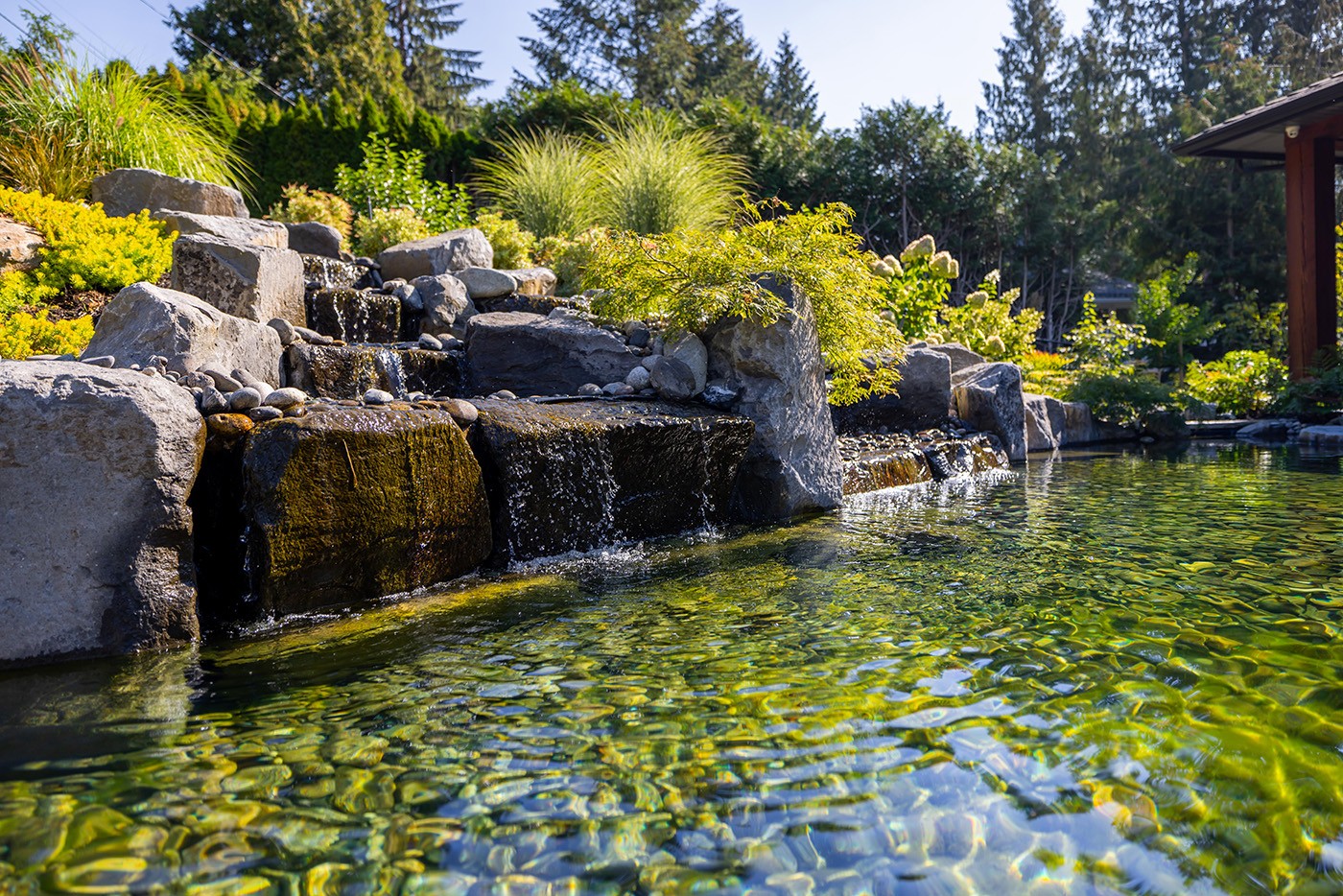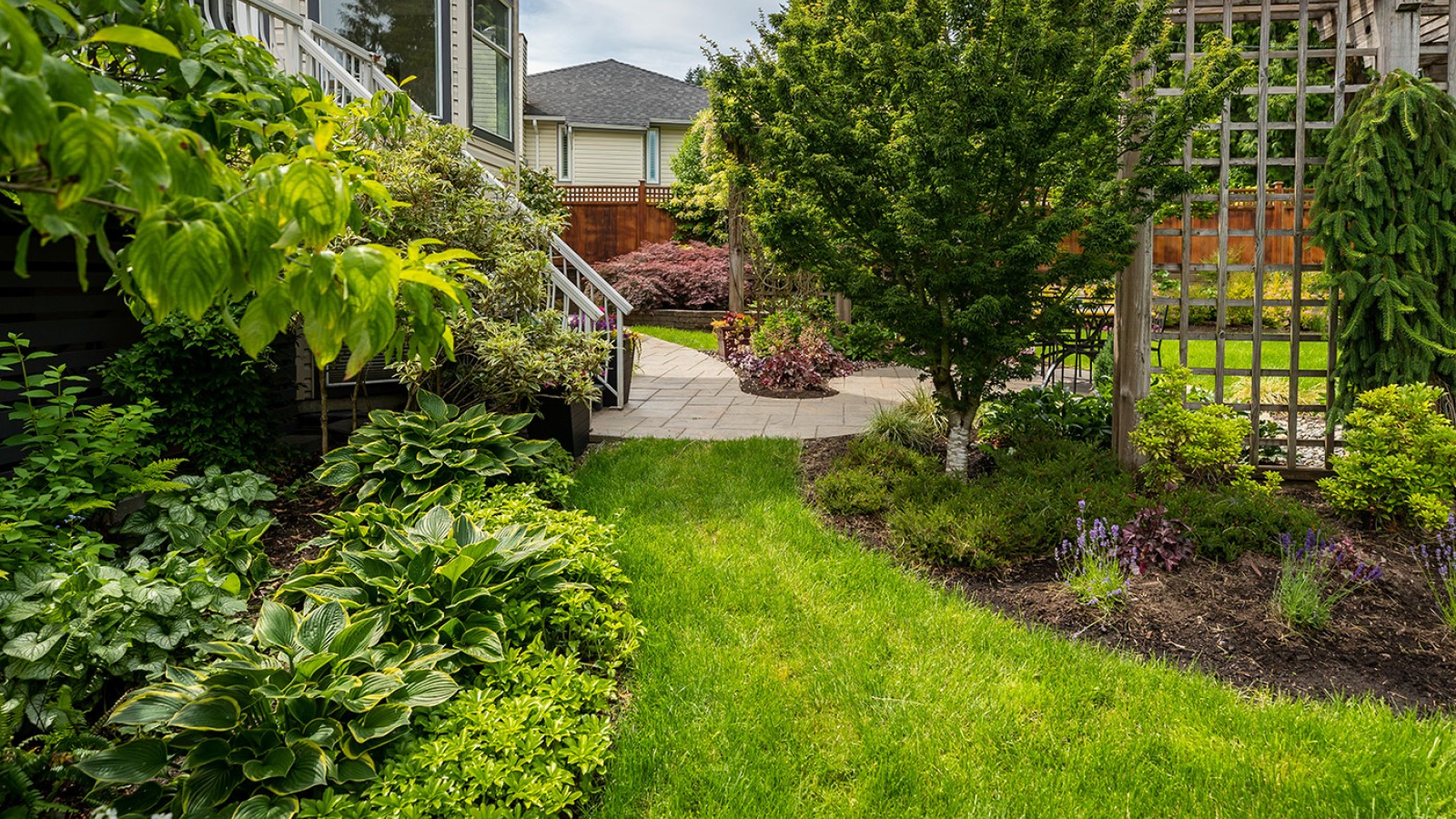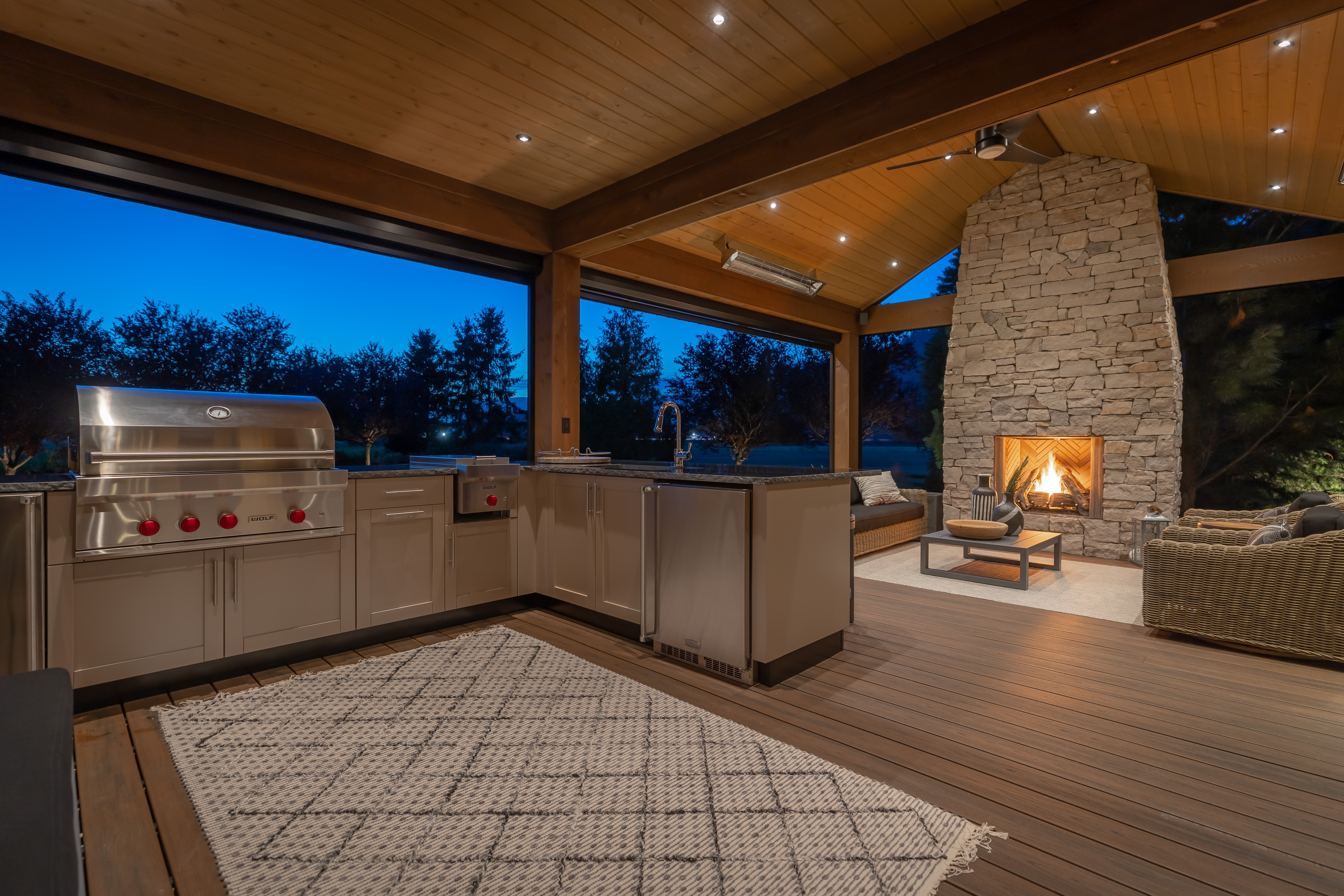
The Truth About Pond Maintenance
Ponds are easier to care for than you may think…
A beautiful way to prevent flooding from excessive rainwater…
Landscapes that rely heavily on asphalt, concrete and other impervious surfaces, including lawns, have a serious impact on their ability to soak up rainwater. This creates two problems — flooding and erosion due to excessive runoff and land that’s unable to absorb enough water and nutrients to sustain plant growth, particularly during a drought.
Fortunately, there are ways to lessen this impact in a way that is both sustainable and beautiful… by designing and installing a rain garden.
A rain garden is a landscape feature designed to collect rainwater that runs off your roof, lawn and driveway and other non-porous surfaces. They’re built by creating a shallow depression and filling it with a special soil mix designed for optimal drainage and water filtration, then planted with grasses and flowering perennials that tolerate drought, but are not afraid to get their feet wet!
As stated above, the primary benefit of a rain garden is to prevent flooding associated with groundwater runoff, but they also have a number of other benefits too.
Properly designed rain gardens help reduce flooding by holding on to excess rainwater, slowly releasing it over time. They complement any style of landscape and can be built to any size, based on available space, your property’s needs and personal preferences. Here are a few tips for designing yours.
Caring for a rain garden is similar to caring for any garden, except the emphasis is on maintaining proper water flow and drainage in addition to plant health. Here are some tips to keep your rain garden healthy and functioning properly.
A rain garden can be a great way to manage stormwater runoff and support local biodiversity. By carefully selecting plants, designing the garden for maximum water absorption, and maintaining it properly, rain gardens can be a sustainable and beautiful addition to any landscape.
If you’d like help designing and building a rain garden — or any garden — for your yard, reach out to us. Our horticulturists will be happy to speak with you about your project and help you create a stunning and functional garden.

Ponds are easier to care for than you may think…
The surprising benefits of a professionally designed landscape
Eco-friendly, customizable “swimming ponds” offer crystal clear water without the chemicals
Your guide to a fresh and bountiful harvest
Where to start, what appliances to choose and four major details you can’t miss.
Five reasons why it’s worth paying for a professional design








